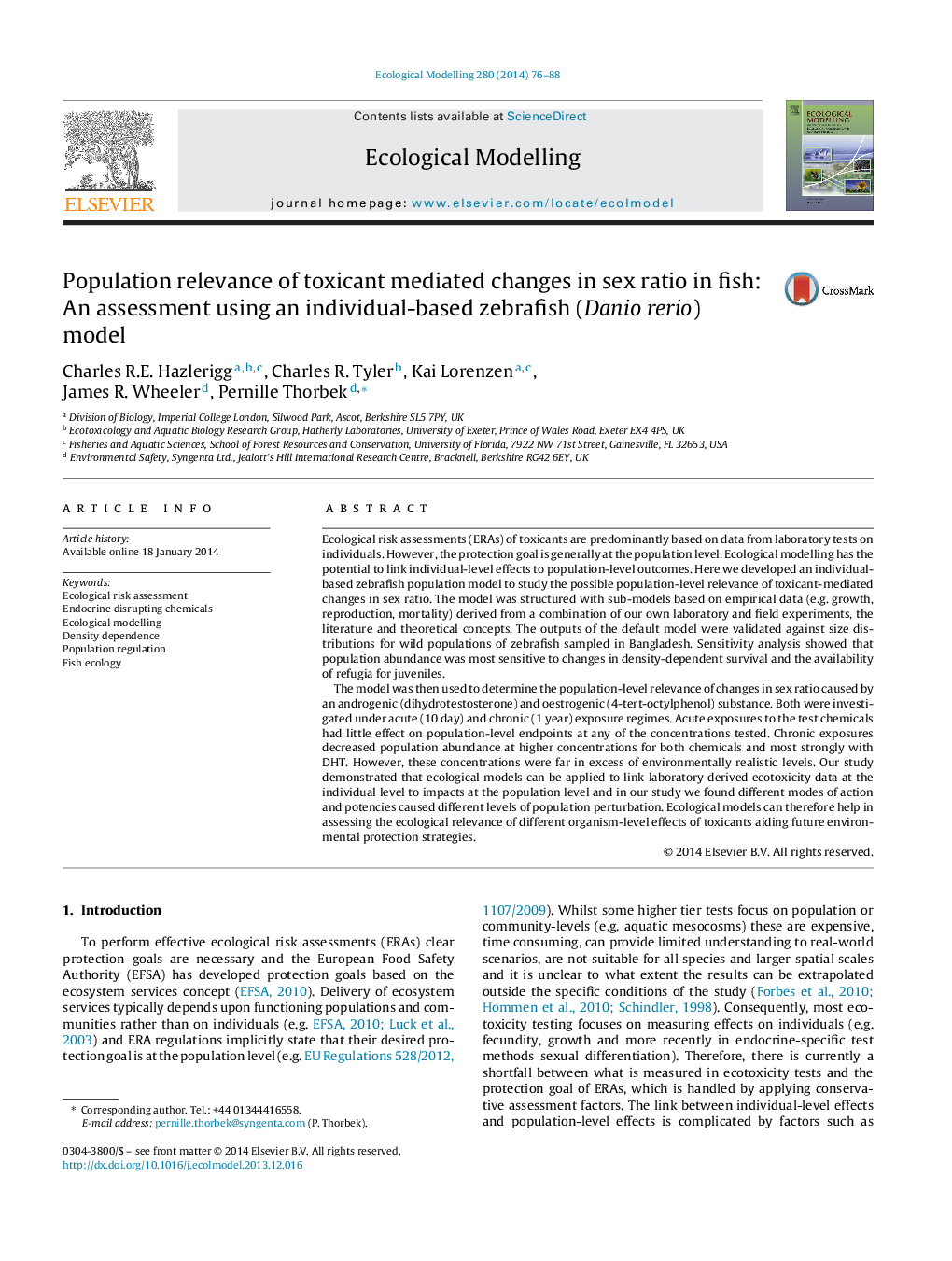| Article ID | Journal | Published Year | Pages | File Type |
|---|---|---|---|---|
| 6296856 | Ecological Modelling | 2014 | 13 Pages |
Abstract
The model was then used to determine the population-level relevance of changes in sex ratio caused by an androgenic (dihydrotestosterone) and oestrogenic (4-tert-octylphenol) substance. Both were investigated under acute (10 day) and chronic (1 year) exposure regimes. Acute exposures to the test chemicals had little effect on population-level endpoints at any of the concentrations tested. Chronic exposures decreased population abundance at higher concentrations for both chemicals and most strongly with DHT. However, these concentrations were far in excess of environmentally realistic levels. Our study demonstrated that ecological models can be applied to link laboratory derived ecotoxicity data at the individual level to impacts at the population level and in our study we found different modes of action and potencies caused different levels of population perturbation. Ecological models can therefore help in assessing the ecological relevance of different organism-level effects of toxicants aiding future environmental protection strategies.
Keywords
Related Topics
Life Sciences
Agricultural and Biological Sciences
Ecology, Evolution, Behavior and Systematics
Authors
Charles R.E. Hazlerigg, Charles R. Tyler, Kai Lorenzen, James R. Wheeler, Pernille Thorbek,
